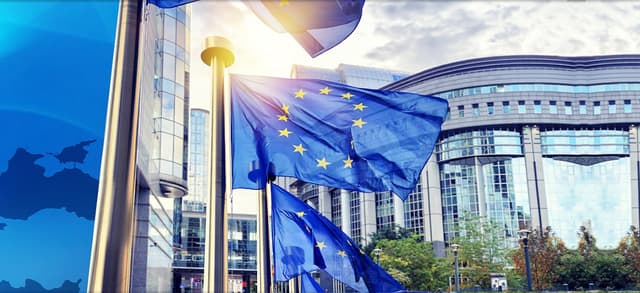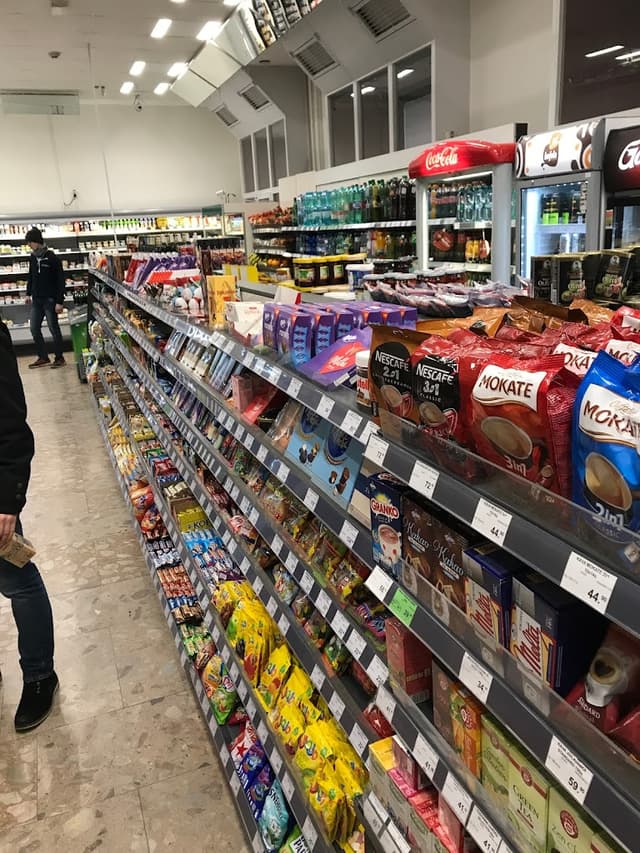Prague 101: Free Guide to Money in Czechia + Bonus Recommendations

All About Money In Czechia
What is the Czech currency?
Here in Czechia, we use the “Česká koruna” - or in English, the Czech crown. You will see prices sometimes listed with the English abbreviation “CZK”, or more often with the Czech abbreviation “KČ.”
The banknotes come in denominations of 100, 200, 500, 1000, 2000, and 5000czk. The 5000czk banknote is uncommon and typically only distributed directly from banks - I have never seen one, after nearly a decade in Prague! The 2000czk is the largest denomination you are likely to encounter, and smaller businesses and vendors may be reluctant to give change for small purchases made with such a large note, it’s better to use big notes like that (or the 1000czk) at larger businesses, like supermarket chains or busy restaurants.
🌟 Heard of Charles Bridge? How about Charles Street, Charles Square, or Charles University? All these places and more are named for the man you see on the 100czk banknote. It features the portrait of the iconic Czech king, Holy Roman Emperor Charles IV, who lived in the 14th century and heavily influenced the development of Prague and the Czech lands.
Lighter, silver-colored coins are worth 1, 2, and 5czk each and are the lowest value currency. Larger, colored coins are worth 10, 20, and 50czk and their value adds up surprisingly fast (as does their weight in your pocket).
🌟 A nice, shiny 50 crown coin makes a great inexpensive and lightweight souvenir, as the design is beautiful.
The front of the 50czk coin features a view of the Charles Bridge in the foreground, and the Little Town and the Prague Castle in the background. Encircling this are the words ‘Praga Mater Urbium” - Latin for Prague Mother City, as the Czech capital is often known as ‘the mother of all cities’ due to its long history and cultural influence.
On the back, you will find the Czech coat of arms: a fierce two-tailed lion.
⚠️ It’s possible you may encounter some old, discontinued Czech currency, such as the “haléř” coins (coins of amount less than 1 crown, look for the ‘h’ instead of ‘kč’), or the much coveted 20czk or 50czk banknotes. These were taken out of circulation some time ago, and at this point cannot be traded in for cash. But if you ended up with some of this old currency, you should know they are becoming rather rare and popular collector’s items. So you may want to keep it, or ask if a local if they would like to buy it off you. I’d personally be very happy to find a 20czk banknote - I’ve never seen one, and I love to add it to my 50czk note and 10 haléř coin, and collect another small part of Czech history!
Can I use Euros in Prague?
Often, yes, but it depends. Every business in Czechia gets to decide what currencies they will accept, and at what rate. Many large corporations (and also smaller businesses, especially in the center of Prague) will accept Euros, and some may even accept USD or GBP (though that is less common, usually only very touristy or expensive places). If they accept foreign currencies, a business must post the exchange rate they use somewhere visible near the cash register.
⚠️ Most businesses will charge slightly more in Euros than crowns, but sometimes a lot more. Street vendors and market stalls in the touristy areas often exploit this the most. But anytime you're using cash in Euros or another currency, it's wise to double check the rate beforehand to make sure you're not spending unnecessarily. Using Czech crowns or paying by card will be the safest way to avoid paying anything extra.
Most businesses that do take Euros in cash, will still give you change in Czech crowns, as they do not often keep many Euros on hand. You may also find that only the banknote or higher value coins are accepted in Euros, as businesses know that the exchange offices rarely accept coins.
❗Tip: You can use Euro coins in many of the public paid WC services. I treat the €0.50 and €1 coins that I have as “bathroom tokens”.
Exchange Rates & Offices
Exchange rates vary and change all the time, so it's best to check the current rate against your currency online or on an app.
You can see the current value of the Czech crown against many different currencies all on this one page here:
⚠️ When at a shop and looking at products, it’s useful to have some idea of what the cost really is. When glancing at a price and trying to gauge if that’s a good deal or not, a good rule of thumb is to use the simple rate of 25czk to €1.
50czk = €2 | 100 czk = €4 | 200czk = €8
500czk = €20 | 1000czk = €40 | 2000czk = €80
Most exchange offices in Prague do not charge a commission fee, but some do. And even those that do not have an explicit fee, they may be selling the currency at an expensive or less favorable rate. All exchange offices, by law, must post their rates to be clearly visible before you exchange. They must also offer a receipt, which you can ask for if they don’t automatically give it to you. They also must return your money if you come back with the receipt within 2 hours of making the exchange.


⚠️ Some offices will offer truly horrible rates, such as at the airport, the train station, the bus station, and touristy neighborhoods. Be extra careful and always double check rates before exchanging! Always take a receipt as well - you have 2 hours to get your money back with that receipt.
What are typical prices in Prague?
Here are some typical prices based on my experience in the city center:
At the Supermarket/Mini-market
Bottle of water (0.33l) - 12-25czk (€0.50-€1)
Bottle of cola (0.33l) - 25-50czk (€1-2)
Chocolate bar - 50-75czk (€2-€3)
At a Cafe
Espresso - 40-60czk (€1.50-€2.50)
Latte - 50-100czk (€2-€4)
Small Pastry - 25-50czk (€1-€2)
Large Pastry - 50-100czk (€2-4)
At a restaurant
Large entreé - 200-300czk (€8-€12)
Small entreé - 100-200czk (€4-€8)
Large domestic beer (0.5l) - 50-75czk (€2-3)
The average visitor to Prague will spend 600-1500czk per day. This can vary widely based on the types of venues they visit, spending habits, appetite, etc.
I am writing this in March 2024, but you can check current average prices linked below (these are listed in crowns but you can change the currency to Euros or others to help you understand the norms) ⬇️
The historic district has very few supermarkets, but you will find many mini-markets (you will see them labeled as ‘potraviny’ or ‘večerka’). Most mini-markets have a small markup normal for a convenience store, maybe 10-15% more than a standard supermarket. They are often family-owned and operated, and are found all over Prague.
⚠️ In zones where most people coming by are foreigners, some of the mini-markets have vastly overpriced products. If the products are unmarked and you only find out the price at the cashier, that is suspicious and not the norm. It’s often that the cashier will decide the price, depending on if the customer appears to be local or not. If you see no prices, ask the price of a bottle of water and if it’s more than 25czk (€1), walk on out.
If you're looking for a guaranteed 'normal' price, look for the nearest Žabka mini-market. It's a corporate chain, but at least you know you're paying the same prices as the locals, and they're are all over the city.

What is a good ATM to use?
In general, use an ATM that is owned and operated by a bank, rather than a third party company.
Some banks that do not charge a fee for withdrawing cash using a non-Czech bank card: Airbank, UniCredit, ČSOB, Raiffeisenbank, KB, and Fio Bank (at time of writing, March 2024). You will find these all around the city center.
Whenever given the option to withdraw cash or spend in either your home currency (EUR, USD, etc) or the local currency (CZK), it’s good practice to always choose the local currency. This means the exchange will be done on your bank’s end, not on the ATM’s end. The exchange rate used by ATMs is notoriously terrible, even the ones owned by banks.
⚠️ Avoid as much as possible using the Moneta and Euronet ATMs - these not only do these have bad exchange rates, but they also charge high fees for using foreign banks cards, among other poor practices.
⚠️ Never exchange money with someone on the street, or anywhere outside of an exchange office desk. And never "break change" for a stranger on the street either (especially someone hanging out nearby the ATM). These are two scams where the scammers will hand over expired Belarussian rubles (worth nothing at all), or Hungarian forints (worth about 1/10 the Czech crown).
How much cash should I withdraw?
Many places take card, so if I were visiting Prague as a solo traveler I would withdraw roughly 500czk (€20) per day to have on hand in cash. This is enough that I feel confident that I could cover a full sit-down meal and a drink for one.
The places that are most likely to be cash only include: street stalls, market stands, and small family-owned eateries, cafes, mini-markets.
But taking card has grown in popularity a lot in recent years. In fact, there is a famously Card-Only venue here in Prague, a trendy market for street food where you can hang out in any season (it's outdoors, but covered).

⚠️ Public bathrooms are often paid (even inside shopping malls and fast food restaurants) - and often in a machine that takes coins only. Some of these machines will take card, but not all. I always keep a handful of coins with me when I'm downtown.
That's the end of this first installment of my Prague 101 free guide! Upcoming are four more essential topics in my new guide series Prague 101:
Law & Safety
Culture & Etiquette
Food & Drink
I look forward to diving into those topics in the future, I will add links to the guides here, as they are completed.
🌟 If you find this guide helps you, you can help me in return by leaving something in my tip jar below this guide. No matter how small, I always appreciate it! (And big tips are appreciated very much as well! ;))
The home for unique & authentic travel

